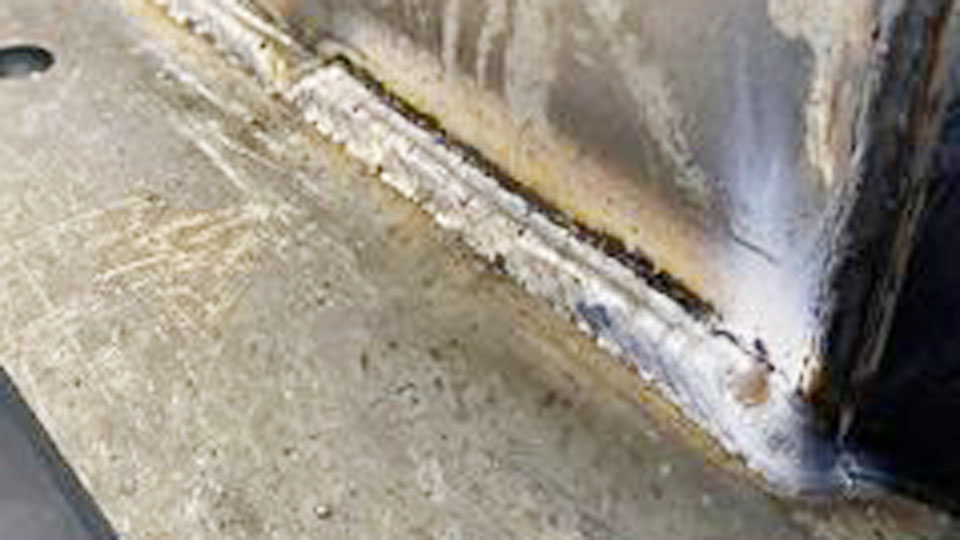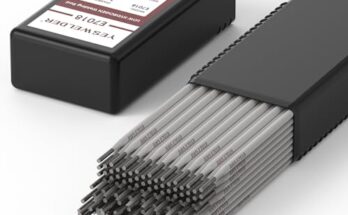Welding galvanized steel with a MIG welder can be tricky, but it’s not impossible. If you’ve ever tried it, you probably noticed excessive spatter, a lot of smoke, and poor weld quality. That’s because the zinc coating that protects the steel from rust also makes welding more challenging.

Image by reddit
I’ve worked with galvanized steel many times, and I know how frustrating it can be if you don’t follow the right steps. But don’t worry—I’ll walk you through everything, from preparation to technique, so you can get strong, clean MIG welds on galvanized steel while keeping yourself safe.
Why Is MIG Welding Galvanized Steel Difficult?
MIG welding works great on clean, uncoated steel, but galvanized steel comes with an added challenge—the zinc coating. When you weld over it, the zinc melts and creates issues like:
- Toxic zinc fumes – Breathing them in can cause metal fume fever, which feels like the flu.
- Porous welds – The zinc burns off unevenly, creating holes and weak spots.
- Increased spatter – The reaction between the zinc and the weld puddle leads to excessive spatter.
- Weld cracking – Galvanized steel welds are more prone to cracking if not done properly.
To get the best results, you need to prepare the metal, adjust your MIG welder settings, and use the right technique.
Preparing Galvanized Steel for MIG Welding
Good preparation makes a huge difference in the quality of your weld. Since MIG welding is more sensitive to contaminants than stick welding, cleaning the metal properly is crucial.
Remove the Zinc Coating
The best way to get a clean weld is to remove the zinc coating from the area you’re welding. There are a few ways to do this:
- Grinding – Use a flap disc, wire wheel, or grinding wheel to remove 1-2 inches of zinc from the weld area.
- Chemical Stripping – Soak the area in muriatic acid or vinegar to dissolve the zinc. Make sure to rinse it thoroughly afterward.
- Sandblasting – This is a good option for large projects where grinding isn’t practical.
Once the zinc is removed, wipe the area with acetone to get rid of any leftover contaminants.
Secure the Workpiece
Clamp the metal down so it doesn’t move while welding. If possible, position it so that fumes escape easily, keeping them away from your breathing zone.
Choosing the Right MIG Welding Wire
The type of welding wire you use makes a big difference. Some wires work better for welding over zinc than others.
Best MIG Wires for Galvanized Steel
| Wire Type | Best For | Pros | Cons |
|---|---|---|---|
| ER70S-6 | General welding, thinner steel | Handles contaminants well, smooth welds | Requires shielding gas |
| Flux Core (E71T-11) | Outdoor welding, thick steel | No gas needed, good penetration | More spatter, rougher welds |
I usually recommend ER70S-6 with a CO₂ or C25 shielding gas mix for the cleanest welds. If you’re welding outdoors, a flux-core wire like E71T-11 can work, but it creates more spatter.
Setting Up Your MIG Welder for Galvanized Steel
Getting the right settings is important for avoiding excessive spatter and porosity. Here’s a guide to help you dial in the right setup:
Recommended MIG Welding Settings
- Polarity: Use DC+ (DCEP) for better penetration
- Voltage: Medium to high voltage depending on metal thickness
- Wire Feed Speed: Start at medium speed, then adjust for smooth arc performance
- Shielding Gas: Use 100% CO₂ for deeper penetration or C25 (75% Argon / 25% CO₂) for a smoother weld
- Nozzle Distance: Keep the nozzle ⅜ to ½ inch from the metal
Step-by-Step Guide to MIG Welding Galvanized Steel
Once you have everything set up, it’s time to weld. Follow these steps for the best results.
Strike the Arc and Maintain a Short Stick-Out
MIG welding works best when you keep the wire stick-out short, around ⅜ inch. A short stick-out helps control heat and penetration while minimizing spatter.
Use a Push Angle Instead of a Pull Angle
For MIG welding galvanized steel, pushing the torch forward (push technique) works better than pulling. It helps keep the weld puddle cleaner and prevents contamination.
Control Travel Speed
Move at a steady, medium pace. Going too fast can result in poor penetration, while going too slow can overheat the metal and cause excessive zinc vaporization.
Weld in a Well-Ventilated Area
Zinc fumes are highly toxic, so always work in a well-ventilated area. If you’re indoors, use a fume extractor or a fan to push the fumes away from your face.
Pause to Let Fumes Clear
If you start feeling dizzy, nauseous, or lightheaded, stop immediately. Take a break, get some fresh air, and let the fumes clear before continuing.
Post-Weld Cleaning and Finishing
After welding, it’s important to clean and protect the weld area.
Clean the Weld
Use a wire brush or grinder to remove slag, spatter, and any leftover zinc residue.
Apply a Protective Coating
Since you removed the zinc coating, the welded area is now vulnerable to rust. Here’s how to protect it:
- Spray cold galvanizing compound to restore corrosion resistance
- Paint over the weld with rust-resistant paint
Common Problems and How to Fix Them
Even with the right setup, you might run into some common issues. Here’s how to troubleshoot them:
| Problem | Cause | Solution |
|---|---|---|
| Porous welds | Zinc contamination | Grind off more zinc before welding |
| Excessive spatter | Too much heat or improper settings | Lower voltage and adjust travel speed |
| Cracking in welds | Brittle welds due to zinc | Use proper wire (ER70S-6), adjust heat settings |
| Weak welds | Poor penetration | Increase voltage and slow down travel speed |
Safety Tips for Welding Galvanized Steel
Safety is the most important part of welding galvanized steel. Here’s what you need to do:
- Wear a respirator – A P100-rated respirator protects against zinc fumes.
- Use proper ventilation – Work outdoors or use a fume extraction system.
- Wear protective gear – Use gloves, a welding jacket, and long sleeves to protect your skin from irritation.
- Avoid breathing in fumes – Position yourself so the fumes drift away from your face.
- Stay hydrated – Drink plenty of water to help flush out any toxins if you’ve been exposed to fumes.
Conclusion
MIG welding galvanized steel isn’t difficult if you prepare the metal properly, choose the right wire, and follow safe welding practices. The biggest challenge is dealing with the zinc coating, but once you grind it off and use proper ventilation, you’ll get strong, clean welds without risking your health.
If you follow these steps, you’ll have no trouble welding galvanized steel with MIG welding. And trust me, once you get the hang of it, you’ll be able to tackle any galvanized project with confidence.
Frequently Asked Questions
Can you weld galvanized steel without removing the zinc coating?
Yes, but it’s not recommended. The weld will be weaker, and the fumes are dangerous.
What is the best MIG wire for galvanized steel?
ER70S-6 with a C25 gas mix works best for cleaner, stronger welds.
Do I need a respirator when welding galvanized steel?
Yes, always wear a P100-rated respirator to protect yourself from toxic zinc fumes.
How do you prevent weld cracking on galvanized steel?
Remove the zinc coating, use the right wire, and avoid overheating the metal.
